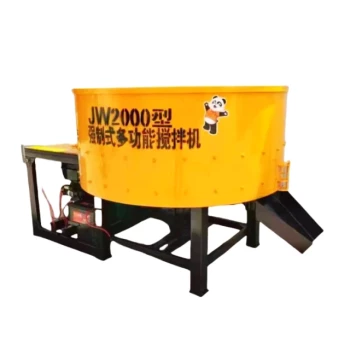The correct charging and discharging techniques for concrete machine trucks are vital for ensuring operational efficiency, mix quality, and equipment longevity. Proper charging ensures uniform mixing and prevents material segregation, while controlled discharging maintains concrete consistency and structural integrity. These techniques also enhance safety, reduce environmental impact by minimizing waste, and optimize fuel and resource usage. Adhering to best practices in loading and unloading helps avoid premature wear on the drum and axles, ensuring stable transport and consistent performance.
Key Points Explained:
-
Ensuring Mix Quality and Consistency
- Correct charging techniques prevent uneven distribution of materials, which can lead to weak spots or segregation in the concrete.
- Discharging at a controlled speed (e.g., ~2 rpm) avoids premature solidification, ensuring the concrete retains its workability until placement.
-
Operational Efficiency
- Proper loading minimizes overfilling, which can strain the drum and axles, reducing fuel efficiency and increasing wear.
- Efficient discharging reduces idle time at construction sites, improving productivity.
-
Equipment Longevity
- Balanced weight distribution during transport, supported by multiple axles, prevents excessive stress on the truck’s structure.
- Avoiding abrupt stops or uneven rotation during discharge extends the lifespan of the drum and mixing mechanism.
-
Safety and Stability
- Overloading or improper discharge can destabilize the truck, risking spills or accidents.
- Controlled rotation during unloading ensures smooth operation, reducing hazards for workers.
-
Environmental and Economic Benefits
- High-quality mixing reduces material waste and the need for repairs, lowering resource consumption.
- Optimized processes cut fuel usage and emissions, aligning with sustainable practices.
Have you considered how minor adjustments in charging/discharging routines could significantly impact your project timelines and costs? These techniques are foundational to the reliability and performance of concrete mixer trucks, quietly shaping modern construction efficiency.
Summary Table:
| Key Benefit | Impact |
|---|---|
| Mix Quality & Consistency | Prevents segregation, ensures uniform strength and workability. |
| Operational Efficiency | Reduces idle time, optimizes fuel use, and speeds up project timelines. |
| Equipment Longevity | Minimizes wear on drums, axles, and mixing mechanisms. |
| Safety & Stability | Avoids spills, truck instability, and workplace hazards. |
| Environmental/Economic Gains | Lowers waste, emissions, and repair costs. |
Maximize your concrete mixer truck’s performance with GARLWAY’s expertise!
Our advanced concrete batching plants and mixers are engineered for precision charging/discharging, ensuring durability, efficiency, and safety. Whether you’re a contractor or large-scale builder, our solutions cut costs and boost productivity.
Contact us today to optimize your operations!
Related Products
- Construction Products Concrete Plant Machine Mixing Concrete Mixer
- JDC350 Small Cement Concrete Mortar Mixer
- HZS90 Large Multiquip Concrete Mixers for Construction
- JW1000 Mobile Cement Mixer Concrete Mixer Truck and Batching Plant
- Auto Concrete Cement Mixer Machine New
People Also Ask
- How much does a batching plant cost? Pricing Guide for Concrete Mixing Plants
- How does concrete not harden in a truck? The Science Behind Workable Concrete
- What are the 4 classifications of concrete mix? Essential Guide for Construction Pros
- What are the factors influencing choice of a concrete mixing plant? Key Considerations for Optimal Performance
- Is there a difference between a concrete mixer and a mortar mixer? Key Differences Explained



















